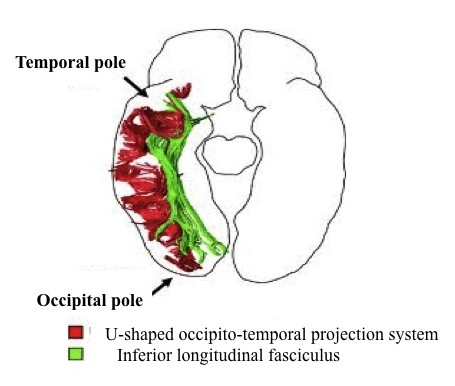Connections between the occipital lobe (involved in vision) and temporal lobe (involved in visual cognition). Long-standing anatomical evidence led to conclusion that there are direct fiber connections between the two lobes via the inferior longitudinal fasciculus. More recent evidence in humans and monkeys suggests otherwise: connections between the two regions are both indirect involving a chain of U-shaped association fibers, and direct consistent with previous anatomical evidence (see figure below). In right-handed individuals, the left occipital-temporal cortex (lvOT) is held to be crucial for skilled reading (viz., rapid wriiten letter identification). However, as revealed by stroke patients with lvOT damage, other neural pathways in the left hemisphere can support this reading skill. Remedial intervention with children who have reading disabilities revealed significant gains in reading fluency and increased activitation in the left hemisphere including the lvOT as derived from fMRI.
